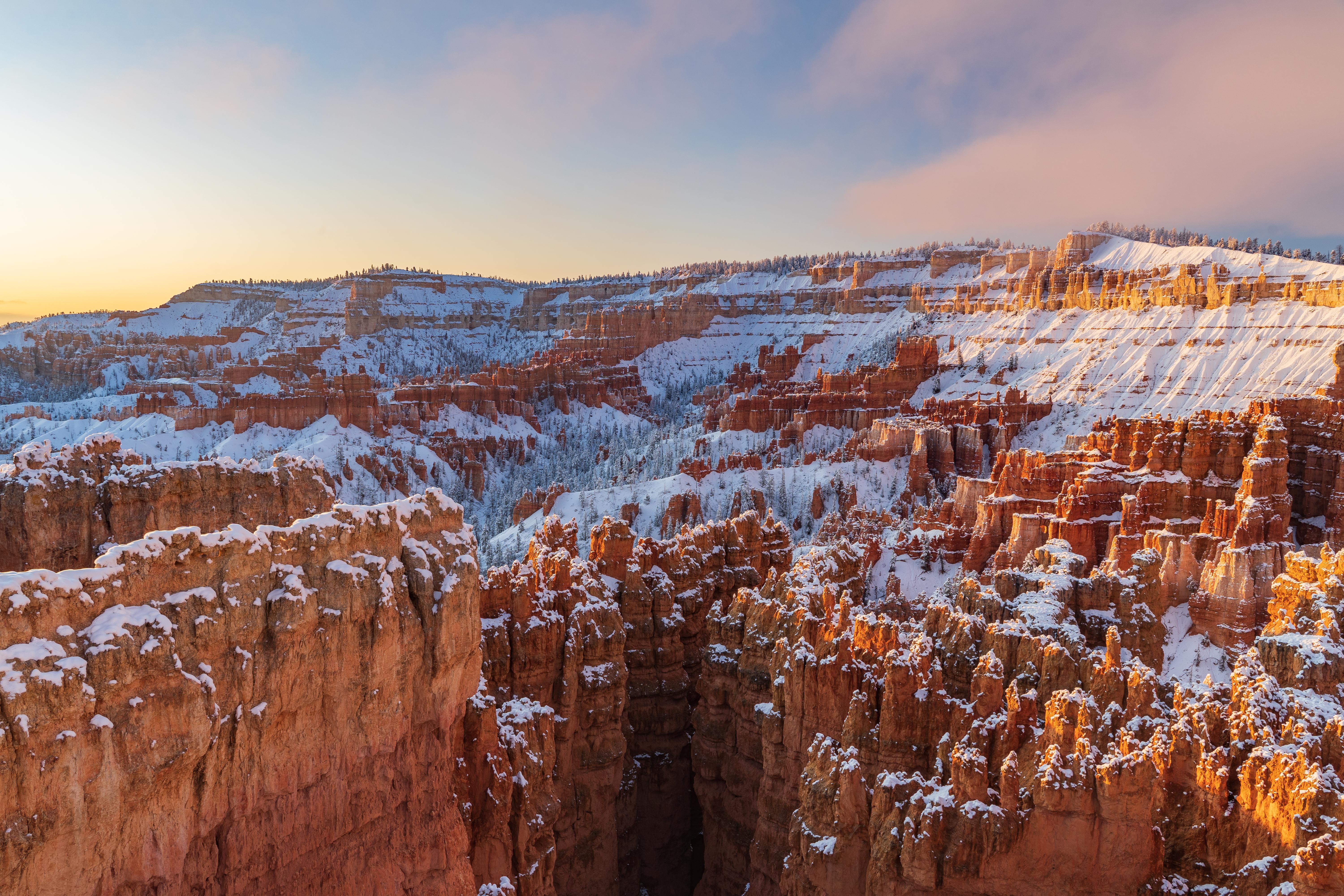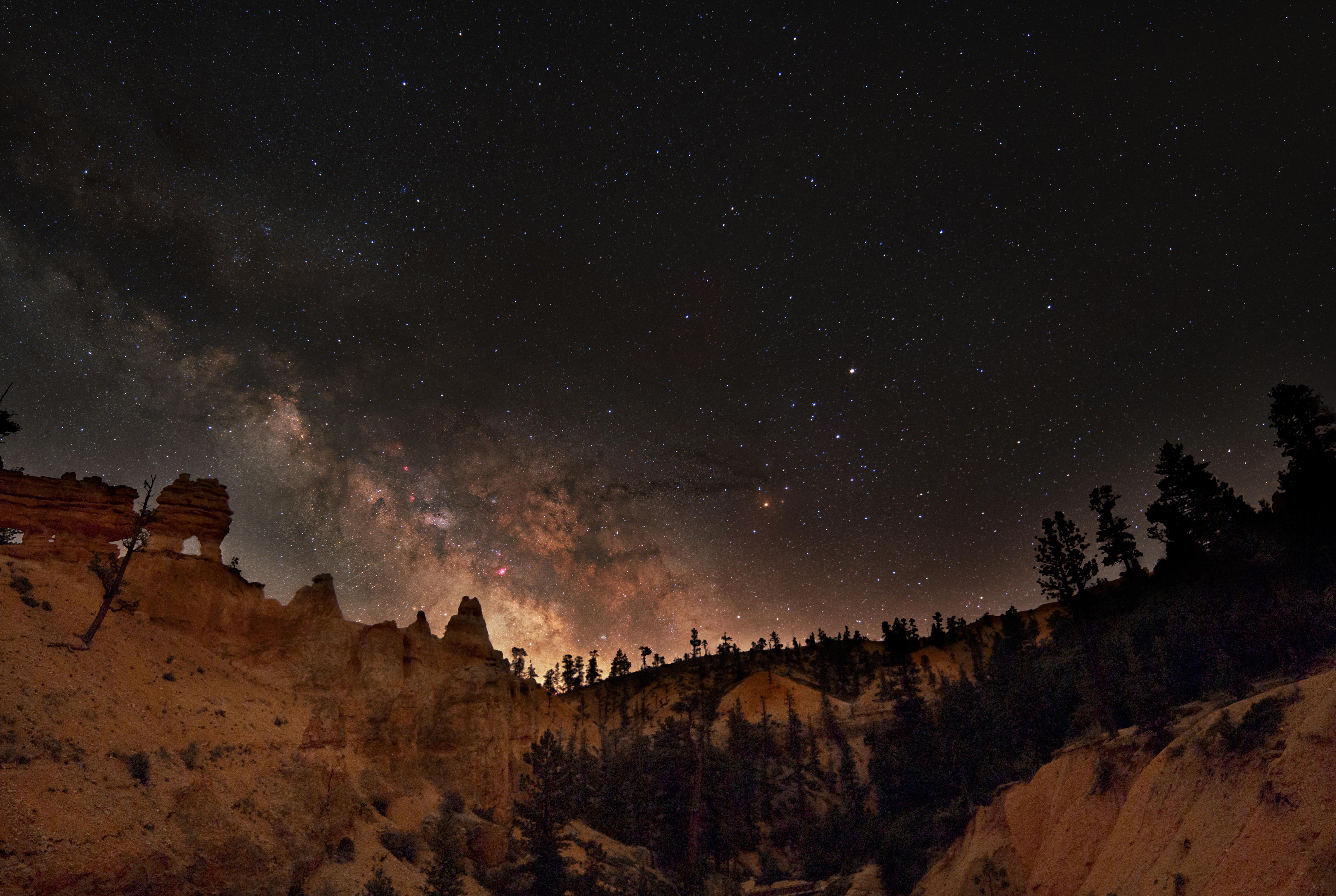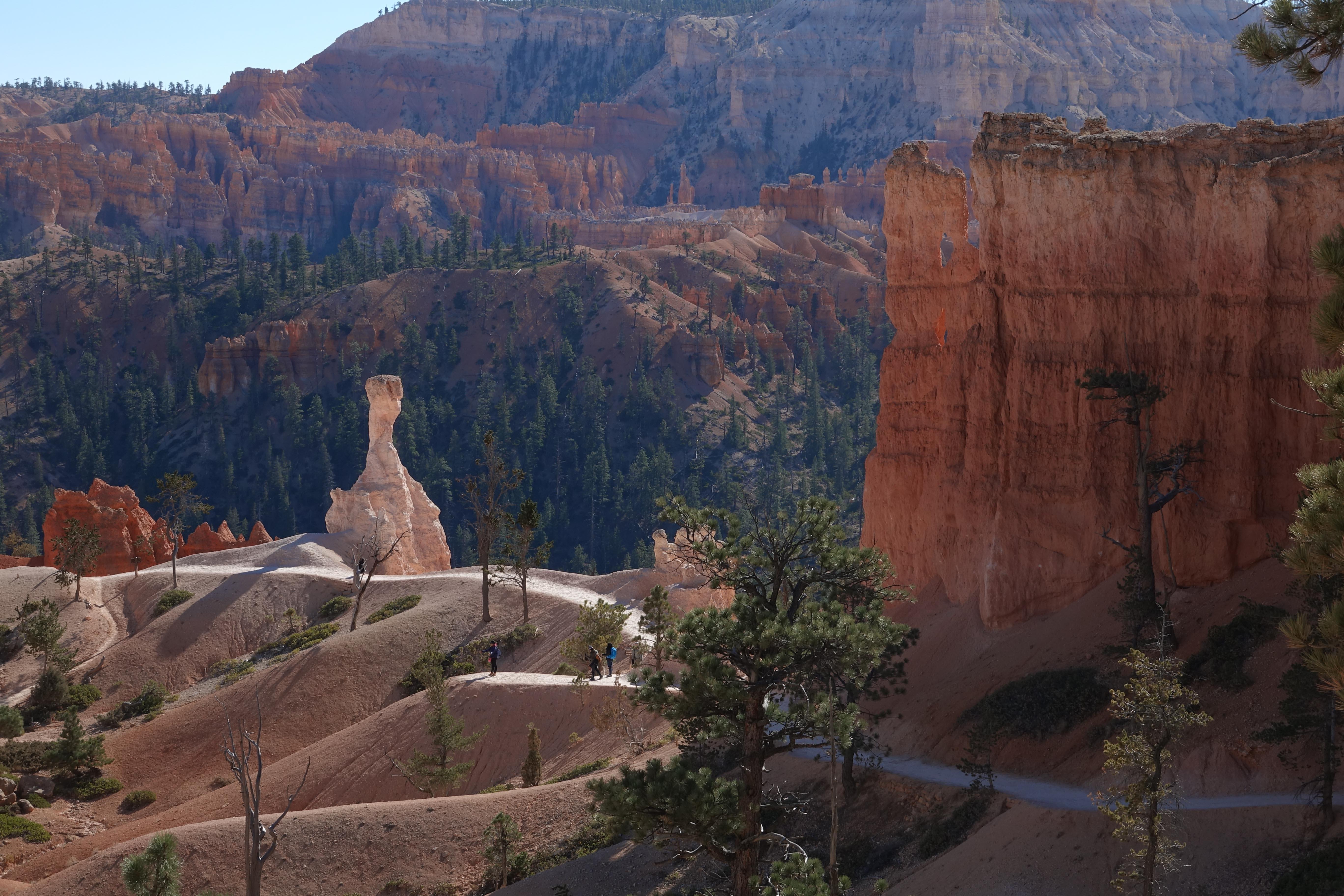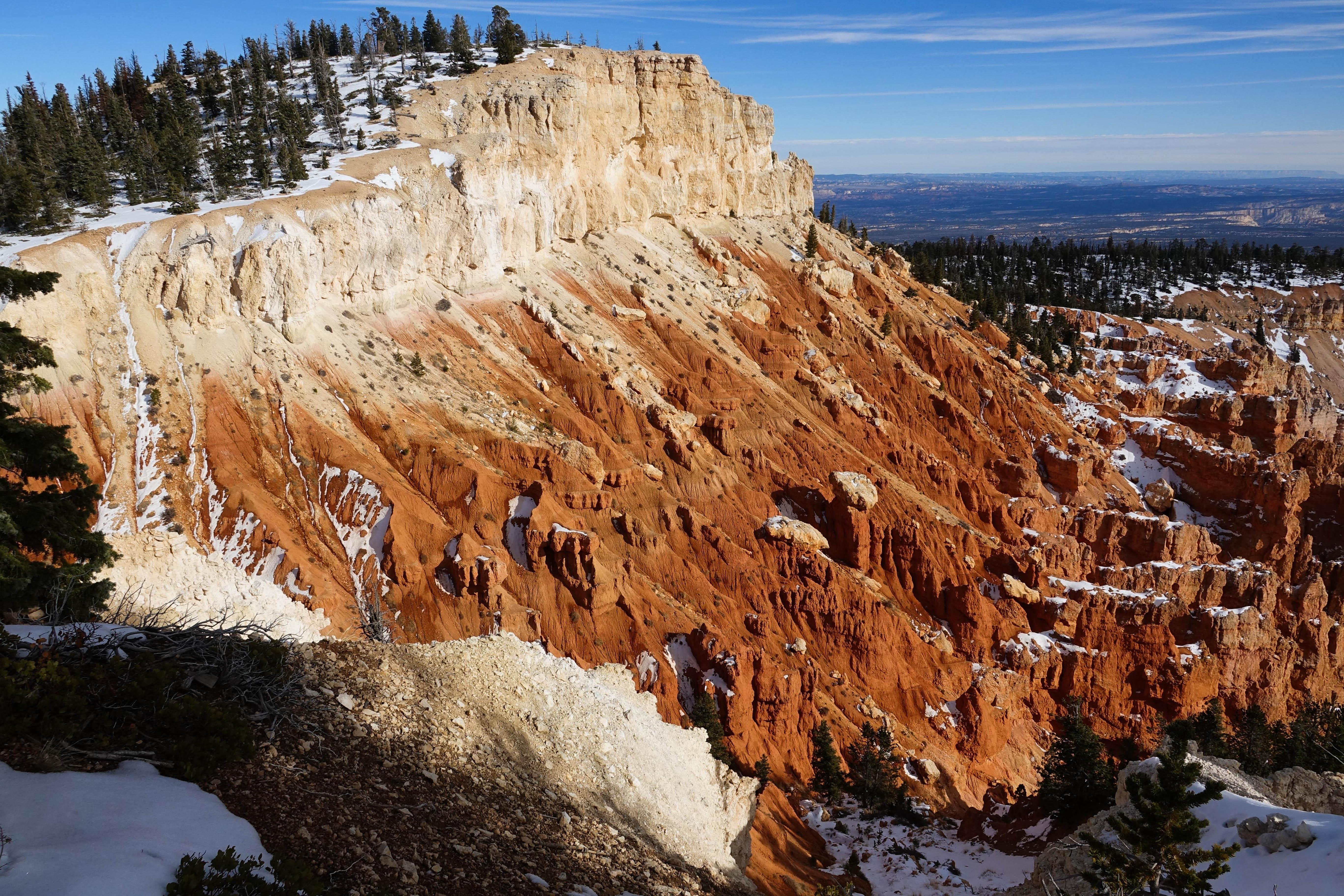Hoodoos (irregular columns of rock) exist on every continent, but here is the largest concentration found anywhere on Earth. Situated along a high plateau at the top of the Grand Staircase, the park's high elevations include numerous life communities, fantastic dark skies, and geological wonders that defy description.
Bryce Amphitheater from Inspiration Point
Viewpoints of the iconic Bryce Amphitheater are located along the first 3 miles of the park road and are a popular destination at sunrise.
Winter sunrise at Sunset Point
Here at 8,000' (2438 m) winter comes early and stays late. Snow transforms the landscape and requires seasonal closures in some areas and trails.
Milky Way over the Hoodoos
Bryce Canyon's clean air and dark night skies are some of its most precious and vulnerable resources. Full moon nights also provide a unique experience of seeing the park after dark.
Queen's Garden Trail
More strenuous trails below the rim provide up-close views of the hoodoo rock spires, while easier walks along the rim give perspective from above.
Bristlecone Loop trail near Yovimpa Point
The park's highest elevations at its southern end and backcountry areas provide views of over 100 miles (161 km) atop high steep cliffs.




